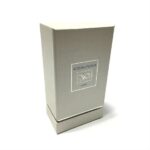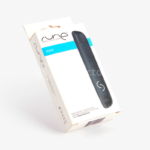In today’s competitive luxury market, presentation is everything. A well-designed custom jewelry box not only safeguards precious pieces but also elevates brand perception and enriches the unboxing experience. Behind every exquisite package lies a precise manufacturing journey that turns an initial concept into a tangible masterpiece.

1. Concept & Brand Alignment
The first step in successful custom jewelry box manufacturing is a deep dive into your brand identity.
- Style direction: Determine whether your brand voice is classic, minimalist, or avant-garde.
- Product fit: Identify the jewelry type—rings, necklaces, bracelets, or a combination—to set dimensions and interior layout.
- Target audience: Understand your customers’ expectations and purchasing habits to inform material choices and finishing techniques.
Aligning these factors ensures that the final custom jewelry box feels like a natural extension of your brand.
2. Design Development
With brand guidelines in hand, the design team creates detailed CAD renderings. This stage includes:
- Structural engineering: Ensuring the box opens and closes smoothly with durable hinges or magnetic closures.
- Aesthetic elements: Selecting shapes, embossing patterns, and window cutouts for visual appeal.
- Material selection: Choosing high-quality paperboard, wood veneer, or premium leatherette that complements your jewelry.
Iterative reviews between designers and clients refine the look until it perfectly balances form and function.
3. Prototyping & Sampling
Before full-scale manufacturing, a prototype or sample run is essential:
- 3D-printed mock-ups or hand-crafted samples allow you to assess scale and mechanics.
- Surface finishes such as foil stamping, embossing, or UV coating can be tested for color accuracy and tactile feel.
- Interior linings—velvet, suede, or satin—are trialed to ensure jewelry protection and elegance.
This hands-on evaluation prevents costly errors in the production phase.
4. Precision Manufacturing
Once the prototype is approved, the manufacturing process begins:
- Die-cutting & creasing: Automated machines shape the outer structure with exact tolerances.
- Assembly: Skilled workers fold, glue, and secure closures by hand or using robotic arms for high-volume runs.
- Finishing touches: Decorative elements like ribbon pulls, inlays, and printed logos are applied with meticulous care.
Strict quality-control checks at each station guarantee consistency, ensuring every box meets your standards.
5. Quality Assurance & Packaging
After construction:
- Inspection: Each custom jewelry box is examined for alignment, print quality, and fit.
- Batch testing: Random samples undergo stress tests for durability.
- Secondary packaging: Boxes are carefully nested in protective cartons to avoid abrasion during shipping.
This rigorous review process cements your reputation for excellence.
6. Sustainable Practices
Eco-friendly manufacturing is increasingly important. Consider:
- Recycled materials: FSC-certified paperboards and biodegradable liners.
- Water-based inks: Low-VOC printing for reduced environmental impact.
- Minimal waste: Nesting patterns in die layouts to optimize material usage.
Embracing sustainability enhances your brand’s appeal and contributes to a healthier planet.



